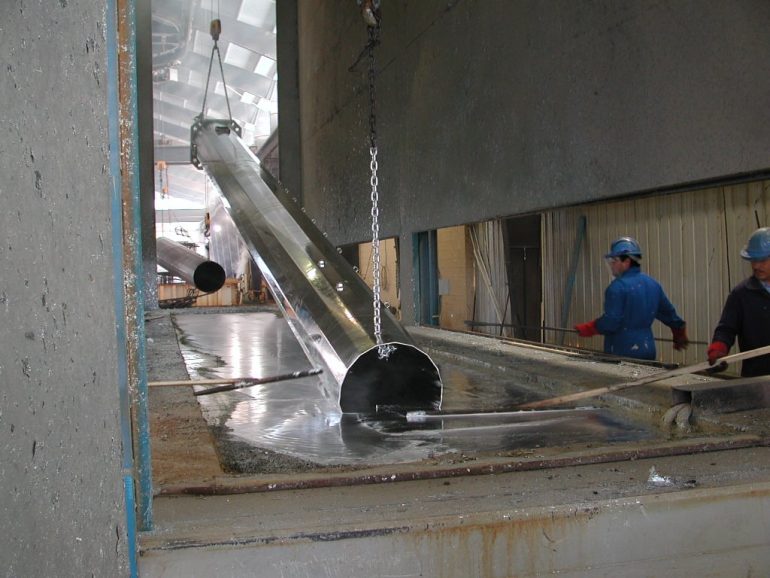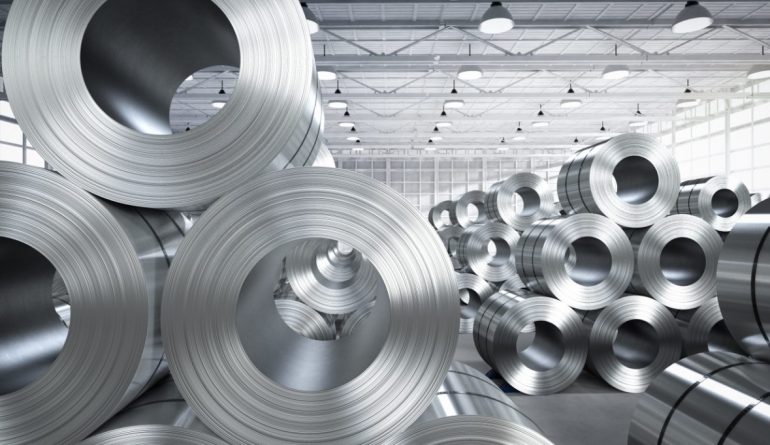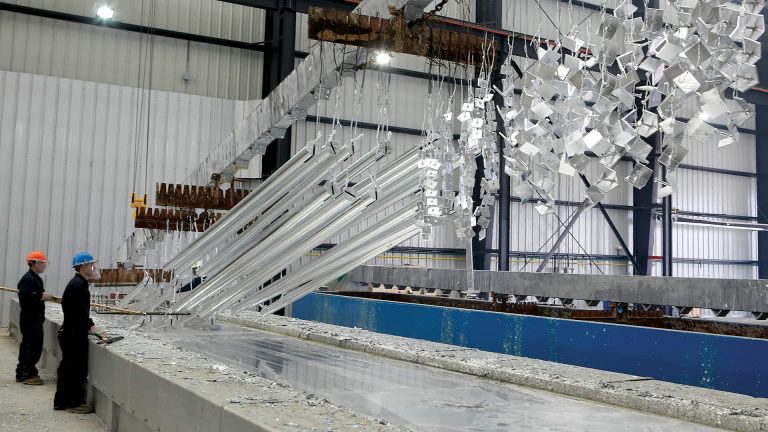As a highly durable and versatile material, steel is commonly used in the construction of various products such as nails, nuts, bolts, buildings, bridges, facades, gates, and fencing systems.
However, like all metals, steel is prone to corrosion, especially when exposed to harsh weather conditions or environments with high salt and moisture levels. To combat this, many manufacturers of such products utilize a process called galvanizing, which adds a protective layer to the steel, helping it resist corrosion and extending its lifespan.
In this blog post, we’ll explore the benefits of galvanizing steel, how the process works, and why it’s important.
What Is Galvanizing?
Galvanizing is the process of coating steel or iron with a layer of zinc to protect it from corrosion. The most common method of galvanizing is hot-dip galvanizing, where steel components are immersed in a bath of molten zinc, forming a strong, corrosion-resistant coating.
Another method is electro-galvanizing, where zinc is applied using an electrical current, though this coating is typically thinner and less durable than hot-dip galvanizing.
The Benefits of Galvanizing Steel
1. Corrosion Resistance
The primary benefit of galvanizing steel is its ability to resist corrosion. Zinc acts as a sacrificial layer, meaning it corrodes before the underlying steel does. Even if the galvanized coating is damaged, the zinc will continue to protect the exposed steel by forming a protective oxide layer, known as patina, which slows down the corrosion process.
This is especially important for outdoor structures such as bridges, gantries, gates, and fencing systems which are often exposed to moisture, rain, and varying environmental conditions. Galvanized steel helps ensure that these objects remain structurally sound and free from rust, even in tough climates.
Trusted manufacturers will often be able to offer a galvanized option on their products. For example, Lochrin Bain is a UK fabricator of steel palisade fencing and offers galvanized steel across their product range. You can learn more about the processes they use here.
2. Extended Lifespan
Galvanized steel significantly extends the lifespan of the products that feature it. In normal environments, galvanized steel can last between 50 and 70 years without requiring major maintenance or replacement.
In harsher environments, such as coastal areas or industrial zones with high pollution levels, galvanized steel still offers superior durability compared to unprotected steel, often lasting between 20 and 50 years.
3. Low Maintenance

Galvanized steel requires very little maintenance compared to non-galvanized options. Once installed, the zinc coating naturally protects the steel, eliminating the need for frequent painting, coating, or treating.
While occasional inspections and cleaning may be necessary, particularly in highly corrosive environments, the maintenance demands are far lower than those of untreated steel.
4. Complete Protection
The galvanizing process ensures that every part of the steel component is coated, even the hard-to-reach areas like edges, corners, and inside crevices. This offers complete protection for steel products, which often have sharp edges or points that could be vulnerable to rust in other types of treatment processes.
This thorough coverage is difficult to achieve with traditional painting or coating methods, which may leave small gaps or thin areas that are prone to corrosion. Galvanizing ensures an even and consistent layer of protection.
5. Durability Under Tough Conditions
Galvanized steel is highly durable under tough conditions. It is resistant not only to moisture and humidity but also to impacts, scratches, and physical wear.
6. Eco-Friendly and Recyclable

Galvanized steel is also an environmentally friendly option. Zinc and steel are both recyclable materials, meaning that at the end of their life, galvanized steel can be recycled and reused rather than ending up in a landfill. Furthermore, the long lifespan of galvanized steel reduces the need for new materials, helping to minimize resource consumption.
For industries and businesses seeking sustainable solutions, galvanized steel offers a practical way to contribute to environmental goals without sacrificing durability or performance.
Conclusion
Galvanizing steel offers numerous benefits, from enhanced corrosion resistance and extended lifespan to reduced maintenance and increased durability. For various structures, galvanizing is a crucial step in ensuring that they remain effective and resilient over time, even in the harshest environments.
Whether you’re building a bridge, a skyscraper, or installing fencing for public spaces, choosing galvanized steel ensures that your investment will stand the test of time, providing robust protection and reducing long-term costs.

